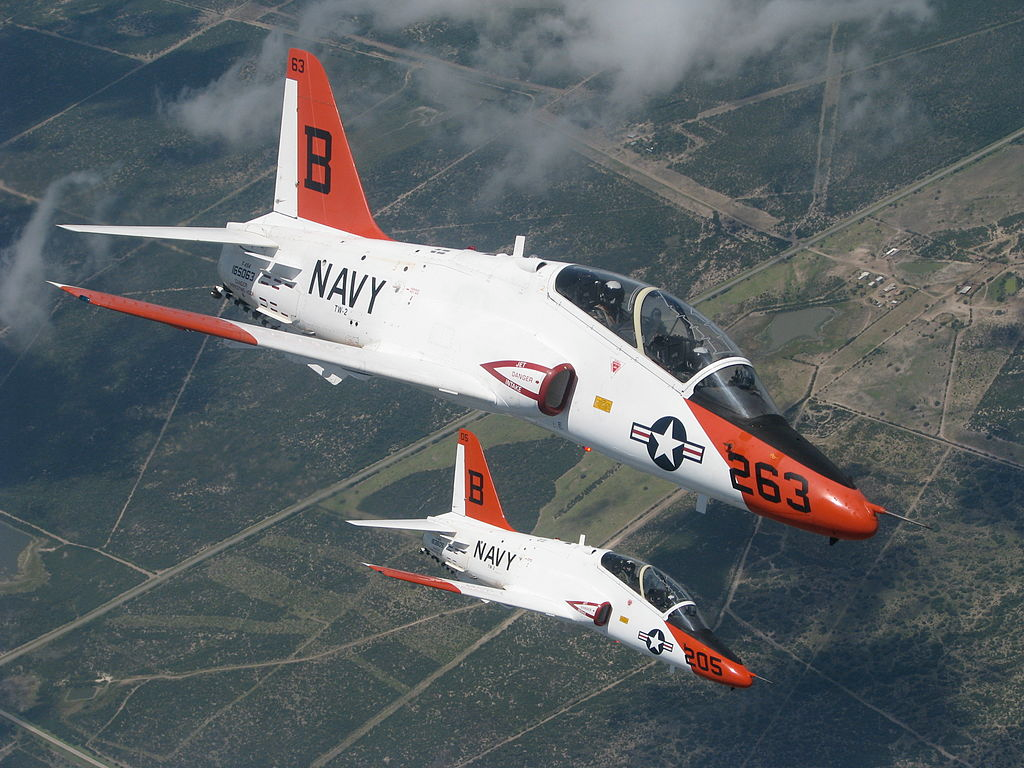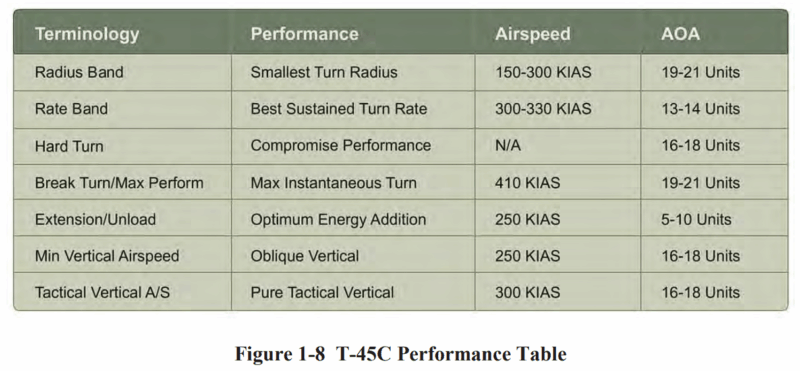How the U.S. Navy Trains Jet Pilots: A Complete T-45 Goshawk Training Breakdown for DCS World.
U.S. Navy T-45C Advanced Strike Training: A Complete Professional Overview.
Introduction.
Welcome to Letsflyvfr.com guide to T-45C Goshawk Training – How the U.S. Navy Trains Jet Pilots so you can train the same as the very best in the world. Here is your chance to create DCS World Missions to replicate the training flights real world pilots have to pass to get their wings. Are You Ready?
Download VNAO T-45C Goshawk V 1.02 for DCS.
What is the U.S. Navy’s Advanced Strike Training Syllabus?
The U.S. Navy’s Advanced Strike training syllabus is the final and most demanding phase of undergraduate jet pilot training. Conducted at NAS Kingsville, Texas, and NAS Meridian, Mississippi, this 23-week program transitions Student Naval Aviators (SNAs) from basic flying skills into mission-ready tactical jet aviators.
Through approximately 156 hours of flight time, nearly 96 hours of simulator training, and extensive academic preparation, students learn to master the T-45 Goshawk and prepare for service in operational fleet aircraft.

This guide breaks down each training phase, the required knowledge, and the performance standards needed to pass so that you can plan and progress you’re flying to the top standard in DCS World.
GROUND SCHOOL AND SIMULATOR TRAINING.
Before ever stepping into the cockpit, SNAs complete several weeks of structured academics and simulator events. This foundation ensures they understand aircraft systems, flight rules, and emergency decision-making.

Academic Knowledge Requirements:
- T-45 Systems
Students must demonstrate proficiency in the aircraft’s turbofan engine, fuel systems, hydraulics, electrical power system, environmental control systems, and the Martin-Baker ejection seat. Knowledge of system limits, caution and warning indications, and emergency handling is essential. - Jet Aerodynamics
Training covers high-speed aerodynamics, transonic behavior, Mach effects, high-angle-of-attack (AOA) characteristics, stall and departure tendencies, jet energy management, and recovery techniques. - Navigation and Regulations
SNAs study instrument flight rules (IFR), tactical air navigation (TACAN) procedures, holding patterns, approach procedures, and military airspace structure. They must understand fuel planning, route construction, and divert criteria. - Meteorology
Weather interpretation, cloud classification, threat identification, and visibility requirements for IFR, VFR, and carrier operations are taught in detail.
Download the T-45 Goshawk PDF – By “IndiaFoxEcho”
(Originally for MSFS).
Simulator Phase (approximately 96 hours):
Simulators are used to practice aircraft procedures, emergency responses, instrument flying, and carrier pattern work in a controlled environment.
Passing criteria include:
- Written exams generally requiring a minimum score of 80%
- Emergency Procedure (EP) “boldface” items requiring 100% precise recall
- Instrument accuracy standards:
Altitude ±100 ft
Airspeed ±10 knots
Heading ±10 degrees
Course tracking within ±5 degrees
Students must demonstrate correct checklist discipline, task prioritization, and situational awareness before progressing to aircraft flights.
FLIGHT TRAINING PHASES
The flight syllabus consists of roughly 16 graded stages. Each flight is evaluated against Naval Air Training Command standards, typically requiring a grade of “Fair” or better to advance.
- Jet Familiarization (FAM)

Purpose:
Introduce students to T-45 flight characteristics, energy management, stall behavior, and field landing procedures.
Required Skills:
- Takeoff profiles and climb schedules
- Straight and level flight at specified altitude and airspeed
- Stall series: clean, dirty, and accelerated
- High-AOA maneuvering and recovery
- Overhead break pattern, on-speed AOA approach, and controlled landings
Passing Standards:
- Airspeed held within ±10 knots
- Altitude within ±150 feet
- AOA “on-speed” during the approach and in the groove
- Consistent pattern geometry and proper use of power and trim
- Safe landing execution
- Instrument Training (INST)
Purpose:
Teach SNAs to fly solely by instruments under IFR conditions.
Required Skills:
- Precision and non-precision approaches
- Holding patterns and proper entries
- TACAN radial intercepts and tracking
- Missed approach procedures
- PAR and ASR controller-talkdown approaches
- Lost communications procedures
Passing Standards:
- Altitude ±100 feet
- Heading ±10 degrees
- Course deviation ±5 degrees
- Glidepath no more than half-scale deviation
- Stabilized approach at all key points
Failure to meet instrument accuracy criteria may result in additional flights or remediation.
- Formation Flying (FORM)
Purpose:
Develop precision, discipline, and situational awareness when flying in close proximity to another aircraft.

Knowledge Requirements:
- Station-keeping references and sight cues
- Parade, cruise, and combat spread formations
- Crossunder maneuvers
- Rendezvous and rejoin procedures
- Lead and wing responsibilities
Passing Standards:
- Wingman position maintained within visual tolerances:
Vertical: within roughly 10 feet
Fore/aft: within 1–2 aircraft lengths - Smooth, predictable corrections
- Safe execution of rejoins, breakups, and crossunders
- No acute high-closure or unsafe approaches to the lead aircraft
- Night Familiarization (NIGHT)
Purpose:
Train pilots to manage reduced visual cues and maintain orientation at night.
Required Skills:
- Night overhead pattern and approach
- Landing light management
- Transition from outside references to instruments
- Night cross-country operations
- Night EPs and unusual attitudes
Passing Standards:
- Stabilized on-speed AOA night approaches
- Proper aircraft lighting and configuration
- No disorientation, excessive corrections, or unsafe landings
- Weapons Delivery (WEPS)
Purpose:
Introduce basic offensive tactics and the fundamentals of air-to-ground employment.
Knowledge Requirements:
- Safe dive angles (10, 20, and 30 degrees)
- Release parameters and delivery envelopes
- Aimpoint adjustments for winds and ballistics
- Strafing pattern geometry
- Escape maneuvers
- Range safety and communication
Passing Standards:
- Dive angle within ±3 degrees
- Release altitude ±100 feet
- Airspeed ±10 knots
- Safe escape flown properly
- Consistent aimpoint and weapons scoring within acceptable limits
- Air Combat Maneuvering (ACM)
Basic Fighter Maneuvers (BFM) Manual US NAVY (Unclassified)
Direct Download from LETSFLYVFR.com
Purpose:
Teach introductory dogfighting and Basic Fighter Manoeuvres (BFM).

Required Skills:
- Offensive, defensive, and neutral setups
- Pursuit curves, overshoot management, and break turns
- High-AOA maneuvering and departure avoidance
- Recognizing 1-circle vs. 2-circle fights
- Valid gun tracking and simulated kill assessments
- Maintaining visual lookout and deconfliction
Passing Standards:
- Safe high-AOA maneuvering
- Use of correct tactical reactions
- Valid tracking solutions without losing sight of the opponent
- No unsafe merges, departures, or G-loading violations
- Navigation (NAV)

Purpose:
Develop strong cross-country, low-level, and instrument navigation skills.
Key Skills:
- Low-level navigation at 420–450 knots
- Checkpoint timing accurate to within seconds
- Fuel planning and divert planning
- VFR-to-IFR transitions
- Correct use of timing, dead reckoning, and TACAN fixes
Passing Standards:
- Timing checkpoints within ±5 seconds
- Route accuracy within 1 nautical mile laterally
- Correct inflight recalculations for wind drift
- Compliance with controlled and restricted airspace
- Carrier Qualification (CQ)
Carrier Qualification Manual – US NAVY (Unclassified)
Direct Download from LETSFLYVFR.com

Carrier Qualification is the defining event of naval jet training. Each SNA must demonstrate the ability to land safely aboard an underway aircraft carrier.
Knowledge Requirements:
- Case I daytime carrier pattern procedures
- IFLOLS (“meatball”) interpretation
- On-speed AOA trimming
- Approach turn and groove parameters
- Waveoff and bolter procedures
- Deck taxi, hook handling, and safety rules
On-Ship Requirements:
A typical student completes:
- 14 total passes
- 10 successful arrested landings (“traps”)
- No unsafe passes or deviations outside LSO acceptable trends
Passing Standards:
- Proper groove alignment and centerline control
- AOA on-speed throughout approach
- Meatball kept within one cell of center
- Predictable corrections, no overcontrolling
This phase is high stress and closely monitored; failure to qualify may result in removal from the jet pipeline.
GRADUATION AND NEXT STEPS
Upon completing all phases and earning carrier qualification, the student is designated a Naval Aviator and receives the “Wings of Gold.” This milestone marks the transition from student to fleet aviator.

Graduates then report to a Fleet Replacement Squadron (FRS), commonly known as “The Rag,” where they learn their specific operational aircraft, such as the F/A-18 Super Hornet, EA-18G Growler, or F-35B/C. FRS training covers advanced tactics, weapons employment, carrier strike operations, and mission-ready proficiency before joining a frontline squadron.
Author

Brendon McAliece (Aka Gunnie) is a military veteran with 23 years working on Jet Fighters, their weapons systems and ejection seat/module systems as well as munitions and R&D. Involved with flight simulation since the 1980s, he has flown all the major flight simulators over the years.
He is an Australian expat who has lived in Malaysia, UK, Saudi Arabia and more recently Thailand. He is a multi-lingual blogger who loves to share his life experiences here on LetsFlyVFR.com and DreamingGuitar.com, with his lifestyle and Travel experiences Blog plus his Dreaming Coffee website.
Leave a Reply